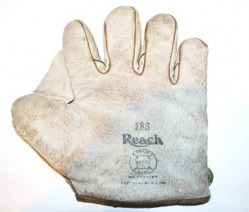Features of Old-time Baseball
Old-time baseball is fully recognizable to fans of the modern game, but the distinctions do create a different atmosphere:
The Ball
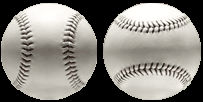
Don’t ask for a new ball, and don’t expect bright white. The so-called deadball baseball stays in play until badly mutilated or defaced.
The Bat

Smaller barrel, bigger handle. Note as well the minimal bulb at the bottom. Choking up was the rule, not the exception, in old-time baseball.
Fielders' Gloves

Smaller, yes. And leave your gloves on the field between innings (a practice that persisted until 1954).
Catcher's mitt affects play
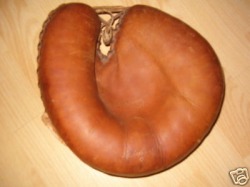
The Cap
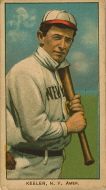
Short brim, but very comfy.
The Uniform
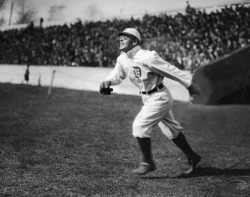
A bit heavier and looser than today’s garb. Full collars and long sleeves faded out gradually in the years just before the First World War. Bit of a shame...
The Chew
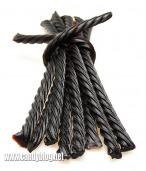
Bring your licorice or chewing tobacco on the field for historical accuracy (sunflower seeds and popcorn were much less common)
The Spit
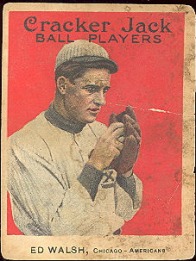
Leave your licorice or tobacco on the ball—spitballs are legal in the early 20th-century, and encouraged on the Jersey City Skeeters
Batsman be ready
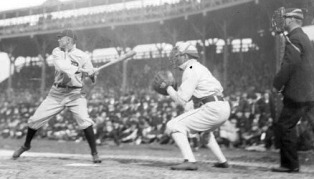
1) No calling time out in the batter’s box—quick pitching is legal.
2) And no batting helmets or batting gloves either:
"Eddie Foster {a 5’2” rookie shortstop, in his first spring training with Jersey City in 1909, and in the majors with the New York Highlanders/Yankees a year later}, who has a habit of stepping forward, almost across the plate, was at bat and when {pitcher Jack} Foxen let loose a high inshoot he took his usual step forward. He saw the ball would hit him and pulled back just in time to catch it behind the right ear. It was a hard blow and the kid went down like a log while the rest of the players rushed to help him. He laid there for a few seconds, but soon came around again and was as lively as ever for the rest of the afternoon, though he carried a lump on his head as big as a turkey egg." (The Jersey Journal, April 10th, 1909, p. 9)
Hit ‘em high

Strike zones are higher than in the modern game, in part because catchers stooped, not squatted
Two-hand catch
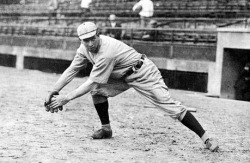
Old-time gloves are not friendly to one-hand catching, so use your off hand to secure the catch.
The Sun
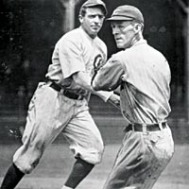
Shade the sun with your hand--sunglasses were rare and primitive by today's standards, and the old-time hats have only a short brim.
